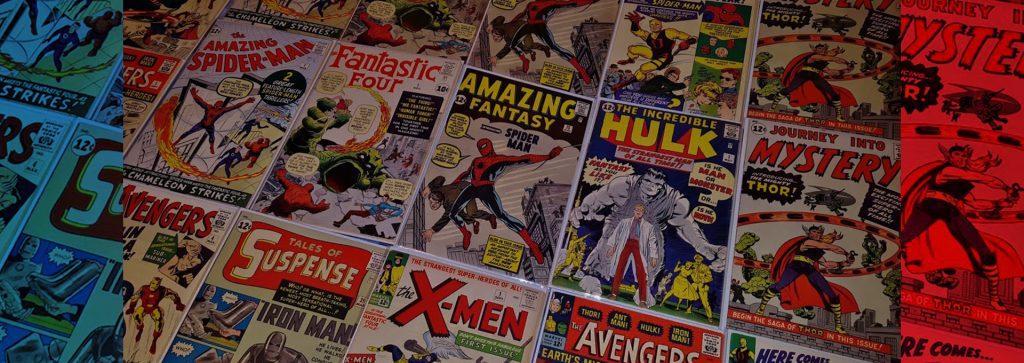Raise your hand if you’re a collector! Could be comicbooks, action figures—anything related to the comic or pop culture world. Did you answer yes? Then you’ll want to keep on reading.
This year, San Diego Comic Con presented a fascinating panel called ‘Preservation of Comic Arts.’ Four conservators, Christina Bean (805 Conservation), Abigail Duckor (Los Angeles County Museum of Art), Anna Laganà (Getty Conservation Institute) and Sophie Hunter (Academy Museum of Motion Pictures), dove deep into the preservation and conservation of comic and pop culture related material. Like, chemistry deep.
While the insight and advice they imparted was fantastic, it may be a little too in depth to share here—and we also might not have fully understood it all. That said, below are some of the biggest takeaways and tips from this conversation, particularly for comicbooks and other items made from paper. (Spoiler alert: There is no “perfect” preservation plan for pulp paper, which most ephemera is made of.)
Bags
Do you store your comics in bags? That’s OK! Just make sure the comic is not completely encased—it’s important to have some sort of way for air to flow, which can stop or slow down acid (which in turn can make paper break eventually or even ‘burn’ other paper!). However, there’s one big caveat: Don’t use tape. (More on that in a bit.) Even if affixed on the outside it can damage or adhere to the comic inside the bag, and static cling can make it an even stickier situation. Some suggestions? L shaped and zipper bags.
Boards
What about using boards in bags? If the quality of the board is good, that’s great (a recommended archival quality one you may hear about is a “grey” board). However, boards don’t offer much support to the comic in the long run, so if you find yourself needing some more space, you can discard the boards, store your collection on its side and use a board to handle the comic if need be (think of how they use those long paddles in pizza ovens).
Tape
One more time for the people in the back: NEVER USE IT! Christina Bean joked about ‘archival’ tape: “It is the Jackalope of preservation products; it does not exist.” All of the tape she’s encountered does not age well, and the only ‘temporary’ product she’s come across is a gummed tape that you have to wet with water in order for it to be adhesive… but if you leave it on the item for a long period of time, it can produce a stain. So, no tape. Never.
Large Storage Boxes
Got a large collection and in need of boxes? You probably don’t want to choose brown standard cardboard boxes; they are acidic, and you could find yourself with unwanted bugs, too! Archival paper boxes that are acid and lignin free are the recommended way to go. What about plastic tubs? They might work if you need an inexpensive option… as long as they aren’t fully sealed so air can flow.
Light Damage
It’s irreversible, folks—unless you add color on top of what’s already been damaged. So, keep your precious materials away from the sun. Also, if you use UV-coated material, make sure to verify that, as not all UV material has the same life expectancy.
Display
Putting your precious books or other collectibles on display and using lights to really make them pop? Sounds cool! Try as best you can to keep the dust at bay, because it can scratch the surface of your items and also hasten deterioration. As for the illumination, Abigail Duckor suggested using LED lights, because 1. They don’t release heat and 2. They have a low UV.
Handling Objects
Particularly for objects that are very fragile, flaking, coming apart, etc., use gloves and be sure to grasp the item from a stable part as to prevent breaking and minimize wear on the piece.
Do you have a large collection?
If so, it’s smart to keep track of all your valuables on a program like Excel. This way, you’ll know what you have without having to look through boxes. While different materials require different storage conditions, it is best if you have a big collection with many types of items to keep the temperature stable (preferably 65-75 degrees Fahrenheit) and relative humidity between 45-55%. Also, archival containers (key: acid free) are best for storage!
For more information (and there is much, much more!), check out some of these resources from the panel.


